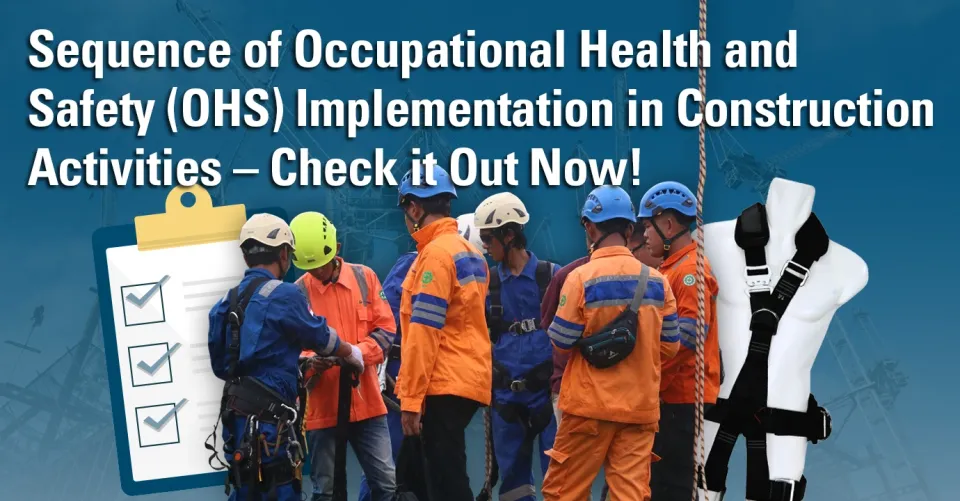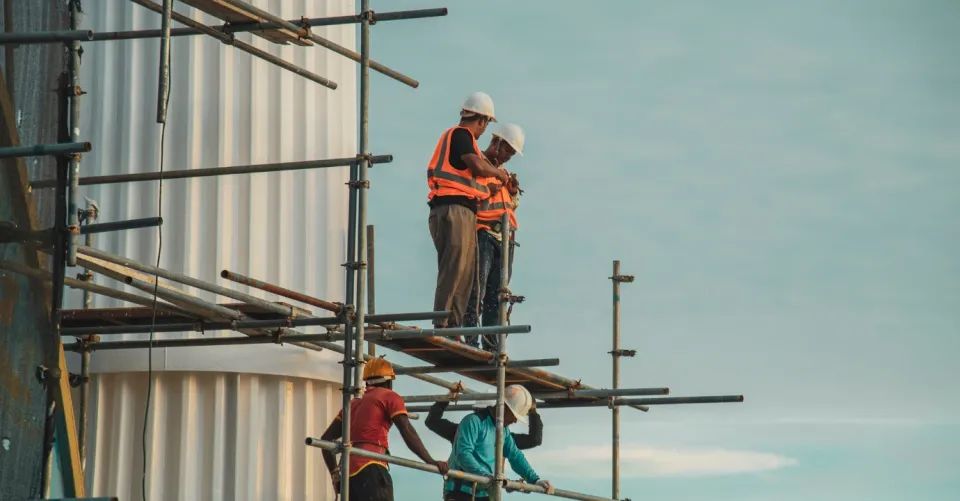
Steps for Implementing Safety (K3) in Construction Activities – Learn Now!
We all understand that the construction sector carries a high risk of accidents. Therefore, the implementation of Safety, Health, and Environment (K3) in construction is key to reducing these risks.
But how exactly is K3 applied in construction activities? Let’s dive deeper into this topic to provide a clearer understanding.

Steps for Implementing K3 in Construction Activities
Before starting a construction project, several steps need to be applied to ensure the safety of everyone involved. Each of these K3 stages is crucial and must not be skipped. Let’s explore the order of implementation in construction activities.
1. K3 Risk Identification
The first step in implementing K3 in construction is identifying the risks that may occur at the construction site. This analysis is done to anticipate all potential hazards that could arise, such as the possibility of building collapse or the risk of workers falling from heights. This identification serves as the foundation for all preventive measures to be taken.
Once the risks are identified, it is essential to document them. This document must also be updated regularly as the project progresses. By doing so, the K3 team will have a clear overview of what actions need to be taken.
2. Worker Training and Education
After risks are identified, training and education for all workers are essential. The goal is to ensure that each worker understands how to work safely and knows the emergency procedures. For instance, training on the use of personal protective equipment (PPE) such as helmets, shoes, and safety vests.
This training also covers evacuation procedures, fire handling, and safe equipment use. All workers must be trained to ensure they have the knowledge and skills needed to handle various emergency situations.
3. Supervision and Monitoring
K3 implementation won’t be effective without strict supervision. K3 supervisors must always be present on-site to ensure all safety procedures are followed correctly. Additionally, regular monitoring is required to evaluate whether there are any violations of K3 regulations.
Whenever a violation is found, corrective action must be taken immediately. This helps minimize the risk of accidents that could occur on-site.
Also see: 100kg Load Dropped from 4 Meters Height? Here's the Absorber Drop Test Process on Lanyard!
4. Implementation of Personal Protective Equipment (PPE)
The use of Personal Protective Equipment (PPE) is mandatory for all workers on-site. PPE includes helmets, safety shoes, gloves, and eye protection. Implementing PPE is a non-negotiable requirement, as it is essential for protecting workers from the risks of workplace accidents.
5. Emergency Response
Emergency response procedures are also a crucial part of K3. Every construction project must have a clear evacuation plan that is easily understood by all workers. Assembly points, evacuation routes, and emergency contact numbers should be available at every corner of the project site.
Medical equipment, such as first aid kits and access to the nearest hospital, should also be prepared. Quick action in handling emergencies can save lives and reduce the negative impact of workplace accidents.
6. Evaluation and Update of the K3 Program
Regular evaluation of the K3 program is essential to ensure all safety protocols are running as planned. This involves reviewing the actions taken and making adjustments if there are any changes in conditions on-site.
Additionally, the K3 program should be continuously updated according to technological advancements and regulations. Through regular updates, companies can ensure their safety system remains relevant and effective.
Implementing K3 is not an easy task, but it is vital for the success of a construction project. By following the right steps, companies can protect their workers and ensure the project runs smoothly from start to finish.
Do you want to ensure your team works safely at heights? SpanSet Indonesia offers specialized height safety training designed to protect workers from fall risks. Contact us now and ensure your project runs smoothly!
For further consultation about SpanSet Indonesia products and services, please contact us via email at [email protected] or WhatsApp
To find specification detail and prices of SpanSet Indonesia Products, please visit SpanSet Indonesia Marketplace on Tokopedia and Shopee.